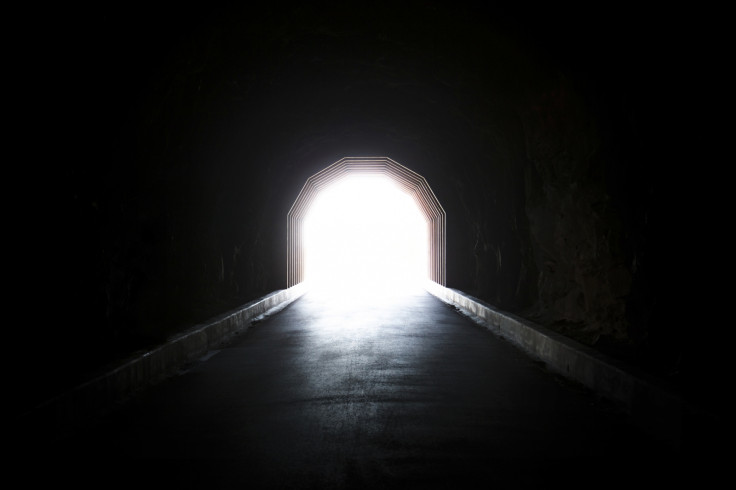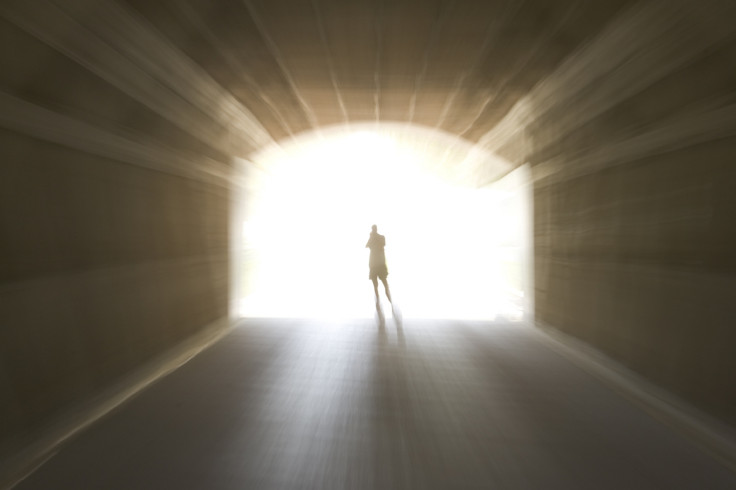What are near-death experiences? Neurological processes may explain 'dying sensation'
Out-of-body experiences, tunnels of light and feelings of euphoria may all have neurological explanations.

"I was out of my body and could see my friends pulling me out of the pool and trying to revive me. I was dead, but could see and hear everything that was being said and done. All of a sudden I was in a dark place, I was alone for a few minutes and then I returned in my body".
In this typical account of a near-death experience, found among the many similar stories published online, a man recalls an accident in which he nearly drowned.
His out-of-body experience, his 'awareness' of being dead and his superior consciousness of all things around him are all common features of near-death stories – and are often combined with reports of feeling intense bliss, encountering loved ones or seeing a 'tunnel of light'.
Characteristics of near-death experiences
In a 2001, a study published in the Lancet revealed that 50% of people reported an awareness of being dead while going through near-death experiences, 24% said that they had had an out-of-body experience, 31% remembered moving through a tunnel, and 32% reported encountering deceased people.
Another study published in the journal Trends in Cognitive Science, in 2011, established that around 3% of US citizens had once had a near-death experience. However, people often show little interest to the science behind them, with literature on the subject preferring to promote 'paranormal' explanations to the phenomenon.
The authors of this research have reviewed many studies about the most common manifestations of a near-death experience. This has allowed them to hypothesise about what neurological processes may be involved in the phenomenon.
Their work suggests that many features of near-death experiences could in fact be traced back to dysfunctions in the brain during a traumatic event.
Awareness of death
To explain why a majority of near-death experience victims report feeling dead, the researchers highlight literature on the Cotard syndrome, or Cotard delusion, a rare mental disorder in which the patient holds the delusional belief that he or she is already dead. Anatomically, it has been associated with the parietal cortex, as well as the prefrontal cortex, and has been described as taking place after trauma.
The scientists thus believe that a near-death experience could be a form of Cotard syndrome that individuals go through to mentally process the trauma of a near-fatal accident.
Out-of-body experiences

The sensation of floating outside of the body and of being aware of everything that is said and done is also an important characteristic of most 'near-death' events.
The scientists compare this phenomenon with a form of sleep paralysis. During rapid-eye movement, or REM, sleep, some individuals are aware of the external world but unable to process the stimuli.
They therefore experience visual or tactile hallucinations that are associated with a wake-sleep cycle.
A near-death experience could be based on similar mechanisms, with individuals unable to integrate the stimuli they receive when they are close to dying. This could lead to the disruption of the phenomenological elements of self-representation and the hallucination of seeing themselves from outside of they bodies.
Other researchers have demonstrated that by stimulating the right temporoparietal junction – the area that combines information regarding consciousness with emotion and behaviour – they could replicate an artificial out-of body experience.
A tunnel of light
One of the explanations for people seeing a tunnel of light when they are close to dying may be that the reduction of blood and oxygen flow to the eyes leads people to develop a visual disorder, which could also result in loss of peripheral vision or tunnel vision.
The scientists also say that tunnel vision is a symptom of both extreme fear and oxygen loss, both of which are manifest in dying.
Feeling happy and euphoric
Perhaps one of the most remarkable features of near-death experiences is that people may feel euphoria, even if they believe they are dying. This happiness is a prevalent message in many theological doctrines that death is to be celebrated, for it is merely a new beginning and a passage to a new, better life.
Here the scientists point out that near-death experiences produce the same symptoms as drugs such as ketamine. It is possible that a near-death experience disrupts the the pre-frontal cortex and reward-circuits of the brain, so people feel the same feeling of happiness and satisfaction that they might get when they are drugged.
It may also explain why they hallucinate seeing dead people – often people that they knew and liked. These processes may be a way for the brain to protect itself, to shield people from highly traumatic events, and make sure the organism is able to survive.
Obviously, all these neurological processes are only hypotheses, as it is impossible to study the brain of people when they go through a near-death experience; scientists can only rely on people's description of event after they have occurred.
However, they believe the experiences they describe closely match many neurological processes that occur in other syndromes, during traumas or in drug-induced hallucinations. Studying the brain in this context may thus yield more clues as to what is happening to people who go through a life-changing near-death experience.
© Copyright IBTimes 2025. All rights reserved.






















